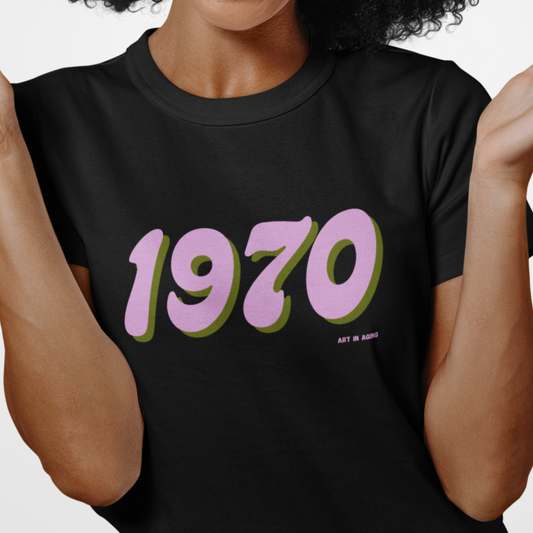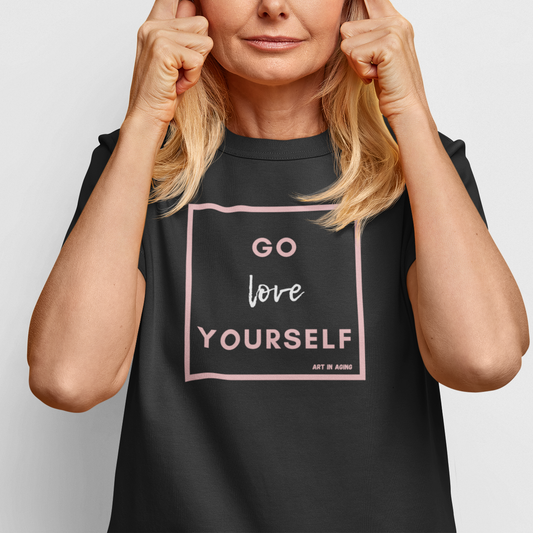Activity at all Ages Leads to Better Health
Finding an exercise that you enjoy and that makes you feel good is a lifelong journey. This journey may begin at a young age and or it may be a new journey at 75. Exercise is of particular importance today, when much of our daily life can be facilitated from the home. Oftentimes, as we age, our levels of exercise begin to decline due to a sedentary lifestyle. You have undoubtedly earned some much-needed rest and relaxation. However, too much may have negative effects on both your physical and mental health. A lack of exercise may result in a higher risk of falling, obesity, heart disease, and depression. The great news is that remaining active at any age can offset declines in mental and physical health. Regardless of age you are beginning your fitness journey, stick with it and you will reap the benefits. Below we will discuss how to introduce fitness into your everyday life below.
Joan MacDonald of @trainwithjoan at 75
Slow and Steady Wins the Race
Age does not need to dictate what you can or can not do but it is always important to listen to your body and recognize what you are most comfortable with. Whether you have exercised regularly for your entire life or if you are just getting started, it’s important to start slowly. Jumping in too quickly can lead to soreness, discomfort and the disappointment that might come with an inability to jump right in. A good warm-up before hand and a good stretch afterwards are key to feeling good after your workout, and don’t get discouraged if you can’t hit your goals right away. Find an exercise that feels right for you, ease your way into it, and you will benefit from seeing more results from steady and constant exercise.
Progress Makes Perfect
Keeping track of your progress is one of the best ways to keep yourself motivated. Setting small incremental goals will allow you to see and feel your progress. For example, if a fast walk is your exercise of choice walk slowly and pay attention to your breathing for a few minutes. If you’re feeling good you can start to pick up the pace.
It’s important not to get ahead of yourself. It might feel as though it’s only worth it to jump right into your routine, but you’ll find that incremental growth can actually be more rewarding. You will feel your ability change as you move from a 10 minute walk to a 30 minute walk with ease. Just remember to only add time and speed as you feel comfortable and the improvements will be easier.
A great way to keep track of your growth can be through setting milestones along your path. If you’re walking outside, choose the last tree on the street as your milestone. Walk with purpose to that tree, and once you reach it you can slow down a bit until you hit the next milestone. This will help with building endurance and will leave you feeling rewarded as you reach each milestone.
Another great way to keep track of progress is with a pedometer or movement tracking device. Keeping track of how many steps you are taking can help you see your progress and set goals more easily.
Gail Gensler of @gailgenslerofficial at 59
Squats Emulate Important Daily Movements
Squats are a great exercise for building strength. They’re also great because they’re pretty much a replica of the movements you are doing on a daily basis. Getting out of a chair, getting out of the car, out of bed, using the toilet, or reaching to get something all involve using a squatting position. Turn that into an exercise and those movements will become incredibly easy before you know.
A bonus benefit of squats is that you can do them at home! If you’re just starting out you can begin by using a chair. From a seated position, push up using the sides of the chair until you feel a tension in your legs and then release. Repeat this movement a few times until you feel comfortable with the movement.
From a standing position, start with your toes pointed forward and your feet about a hip distance apart. Then, with your eyes facing forward push your hips into a squatting position and hold your arms out in front of you, go as low as you are comfortable with and then push your heels back up into a standing position. You can also start off by placing a bench or stool behind you and sit back until you reach the bench. Try starting off with two sets of 10 reps. You can increase the repetitions incrementally as you feel comfortable.
Joan MacDonald of @trainwithjoan at 75 showing us how to do a goblet squat.
Weights Build Stronger Muscles and Bones
Adding weights to your workout helps to improve muscle mass which can make things like carrying your groceries much easier.
Wearing a weighted vest is a simple way to add weights into your routine. While going for your regular walk wearing a 5-10 pound weighted vest easily adds some strength training. You can also try carrying small weights as you go for your walk, pumping your arms as you move. Find the weight that is right for you and don’t use something too heavy if you aren’t used to it.
If you’re lifting weights at home or at the gym, the most important thing is to pay attention to the way you are lifting. Lift slowly and purposefully in both the lift and release motion. Lift slowly for four seconds, and release purposefully for four seconds. The release motion is just as important as the lift motion, as different muscles are used for the different motions.
Jacqueline Hooton @hergardengym at 59 doing deadlifts
Practicing Balance Now Leads to Better Balance Later
Any form of cardio or strength exercise will allow you to build your mobility and balance. If you want to focus on balance in particular, practicing yoga or Tai Chi are the perfect activities. The workouts focus on slow, purposeful movement and encourage learning how to transform your body as you move from position to position. These exercises keep you on your feet, but don’t feel strenuous as you are slowly building the ability to stretch and balance while working your central muscles. You can find classes near you if you wish to join in on a group activity. Working out in groups can be a great way to stay motivated and practice with others, and having people around for accountability can ensure that you aren’t missing a beat! If you prefer to do the activities at home, there are a plethora of videos available on YouTube that will walk you through the movements.
An easy way to work on balance at home is by practicing the ‘Single Foot Stand.’ To begin, hold onto the back of a steady chair. Lift one foot while balancing on the other for as long as you feel comfortable. Then alternate feet and continue. When you feel strong enough, try to do this exercise without holding on to anything. This exercise will build strength in your legs and teach your body to feel comfortable on its own.
Another easy at-home exercise is the ‘Tippy Toe Stand.’ To do this, place your hands on a counter or behind a chair and push yourself as high up as you can onto your toes. Repeat in repetitions of 10 and add 5 as you feel comfortable.
Don’t Forget to Stretch
Stretching might be the most important part of your workout. Joints tend to get less flexible which can decrease our ability to perform certain movements. After any exercise, a brisk walk, bike ride, weight lifting, swimming or doing squats, make sure you are stretching every part of your body. Even if you don’t feel like you exercised a certain muscle, stretching it out never hurts and can even feel like an addition to your workout. Stretching will reduce soreness after a workout and it elongates your limbs so they don’t feel cramped.

Find Your Favorite Activity: Staying Active as We Age
The most important part about working out at any age is finding an activity that you really enjoy and incorporating it into your daily life. Fitness is attainable and can be enjoyable, so long as you are working out because you want to, because you recognize the benefits, and because it makes you feel good about your health. If exercise is something you feel forced into doing, you likely won’t stick with it. And the benefits of exercise are so important that it really is best to find something that you enjoy. There are so many ways to tweak fitness routines into something that works for you. If you find that you prefer exercising with others, find group classes in your area that you can participate in. If you prefer to exercise alone, a walk outside is a great way to begin. If you need something to motivate you, volunteer to walk a dog and you will be committed to taking a walk. At the end of the day, exercise is for you and should be something that you enjoy. The added bonus is that you will build strength and you will find that everyday activities are getting a little bit easier. So take your time, ease into it, and find something that you look forward to. The dreaded days of exercise are no more!
Disclaimer: This is not provide medical advice. It is intended for informational purposes only. It is not a substitute for professional medical advice, diagnosis or treatment. Never ignore professional medical advice in seeking treatment.





